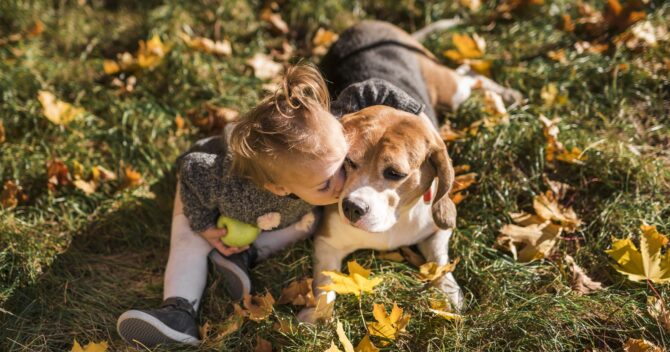Beagle - playmate and family protector
The Beagle has been used for hunting for centuries and has become a favorite domestic dog today. Friendly, gentle, he is a great playmate and at the same time a great family protector.
The Beagle has been used for hunting for centuries and has become a favorite domestic dog today. Friendly, gentle, he is a great playmate and at the same time a great family protector.

Beagle is cheerful, energetic, active and lively. She loves to play. Due to his deeply entrenched instinct, he has a great need to explore his surroundings. He needs a lot of exercise every day. It is an ideal companion for all those who like an active lifestyle and long walks in the park, forest and field. He does not like loneliness, he does not like the lack of company badly. He is very devoted and strongly attached to the owner. He is a great friend for slightly older children. He has a happy, gentle disposition. For this reason, they are not suitable for guarding. He fits perfectly in the company of other dogs, regardless of their age, breed and size. He likes to lead in a group, so he will certainly try to subjugate all the household members. Due to this trait, the upbringing requires consistency and firmness.
Beagle is a breed that belongs to hounds.
Here are the suggested sizes for adult dogs of this breed. They were selected on the basis of many years of experience in sewing accessories and the most common choices of other dog owners of this breed. Remember, only measuring will give you 100% certainty - every dog is different.
A beagle's greed for food knows no bounds, he's just a huge foodie. You should be careful in this regard, because the lack of moderation in eating may lead to their overweight and obesity, which will lead to further health problems. Avoid giving him leftovers from the table. In order to curb this amazing appetite, rationing your food very wisely. It is best to prepare them yourself, ensuring that the meals are rich in nutrients. Taking care of a well-balanced diet, you can enrich it with calcium and vitamins. Any supplements that contain biotin will be useful during the molting period.
Beagles are intelligent, clever, but also stubborn. On a favorable occasion, they will be happy to get their way. Training such a pet requires patience and consistency. Since dogs of this breed are sensitive and friendly, training should be gentle and provide them with positive stimuli. It's best to combine it with fun and your favorite form of reward. When subjected to tiring and strenuous exercises, they become stubborn and closed. It should be emphasized that complete obedience with these quadrupeds is very difficult to achieve. They will certainly cause much less trouble to their owners after a long walk when they are running.
Beagles are strong dogs and generally enjoy good health. Despite the fact that they are resistant to weather conditions, they should not be outside the house all year round. Keep your dog warm in winter, sheltered from the sun in summer. At any time of the year, you should provide him with a significant amount of exercise in the fresh air, taking him on long walks. Dogs of this breed do not require time-consuming hair care, it is enough to brush it once a week. Long, drooping ears, prone to bacterial infections, require regular cleaning. The most common health problems of this breed are eye trouble, which is a prolapse of the gland the third eyelid (most often in puppies) and in older animals - cataracts or glaucoma. Due to their large appetite, dogs of this breed are prone to gaining weight, so they should have limited access to food.
A dog is a man's best friend, we take care of him and treat him as a member of the family. However, it is not human and needs a properly selected diet, different from the human diet. Products that a human can eat without any problem are safe for him, they are not always healthy for a dog. Some of them are simply harmful to your pet, even deadly. After eating them, your pet may become seriously ill or poisoned. Therefore, if we do not want to unknowingly hurt him, it is good to know what a dog cannot eat.
Amstaff - devoted and outgoing, or dangerous and aggressive? What is the true face of this breed of dogs?
If we assume that each dog goes for a walk at least 3 times a day, it gives us on average over a thousand walks a year, i.e. over a thousand opportunities for a joint adventure. What to do to spend a pleasant time and provide a lot of fun for your dog and yourself?